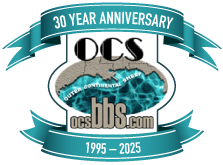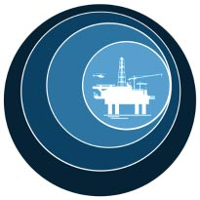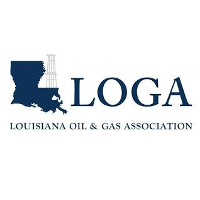Flash Fires/Explosions
Effective Date: 6/15/1973
 | Minerals Management Service Gulf of Mexico OCS Region |
Notice No. 005
June 15, 1973
OCS Operations Safety Alert
Flash Fires/Explosions
There were 15 flash fires/explosions reported by OCS Gulf of Mexico Area oiloperators during the first four months of 1973. Fortunately, these firesresulted in only minor personnel injuries and property damage and no pollution.The relative minor nature of these incidences should not lull operators intobelieving that they are normal OCS operating occurrences, and that nothing canbe done to prevent similar events in the future.
The reported facts and circumstances of these accidents are contained in thefollowing paragraphs. Recommendations which resulted from the investigation orfrom an analysis of the accident report follow each paragraph. Therecommendations should be reviewed by all operators for applicability to theirparticular OCS installations and operational procedures.
GAS ENGINE RELATED EXPLOSIONS/FIRES
In two separate accidents, gas leakage from a faulty head gasket and housingof a natural gas-driven starter motor resulted in a flash fire. Ignition in onecase was provided by a disconnected spark plug lead (the engine ignition systemwas being worked over) and in the other by a mechanical spark created by theimproperly mounted starter.
The recommendation to prevent recurrence of such accidents is "PerformPreventive Maintenance." In the above described accidents, it is apparentthat both the combustible gas supply and ignition source for the fires would nothave existed if preventive maintenance were scheduled and performed. Properpreventive maintenance should include a daily visual examination of operatingmachinery as well as periodic thorough examinations.
Three other fires/explosions involving natural gas engines were also reportedduring this time period. Two were the result of backfire and flashback ignitionin the intake manifold of an engine during start-up and the third was acrankcase explosion. Even though crankcase explosions cannot be entirelyprevented, the effects of such explosions can be minimzed by installingcrankcase explosion relief valves with flame arresters to prevent excessiveengine damage and possible ignition of a secondary fire. The description,analysis, and preventive recommendations submitted by the operator involved inone of the two flashback ignitions follows:
The following sequence of events occurred while attempting to start a naturalgas engine. Ether starting fluid had been applied, the engine was rolling, andignition and fuel were on when the engine backfired. The force of the backfireblew the intake airhose off the carburetor and allowed the flame to propagateoutward igniting a secondary blaze around the sides and top of the engine. Thefire was extinguished by turning off the fuel and discharging a fireextinguisher around the sides and top of the engine.
The backfire which had propagated to the atmosphere by rupture of the intakeairhose was identified as the ignition source. The primary source ofcombustibles for the fire was fuel gas fed through the engine fuel system. Thefact that this source of combustibles did not cease at the moment of backfireindicated that the carburetor did not function properly either because of damagefrom the backfire or because of high fuel gas pressure to the carburetor.
The secondary source of fuel to the fire was found to be a leaking pipe plugin the supply line to the gas starter turning motor. The remedial action takento render this engine safe for continued operation included:
1. Rebuilding carburetor.
2. Replacing sensitive fuel regulator (ounce regulator) and adjusting highpressure regulators.
3. Inspecting starter gas system for leaks and tightening all connections.
Recommendations which were made to help prevent similar fires on all gasengines are as follows:
1. Equipment availability permitting, replace fabric air intake hoses betweenair filter and carburetor with flexible metal or wirebraid reinforced hose.
2. Use a portable combustible gas detector to perform leak checks duringscheduled gas engine inspections.
3. Install a relief valve downstream of engine sensitive regulators toprevent excessive fuel gas pressure.
GLYCOL REBOILER FIRES
Two of the reported fires were of identical circumstances. Both involvedglycol leaks as the fuel source with the hot surface of the reboiler providingthe ignition source. Recommendations to prevent future occurrences of this typefire are:
1. Check for and correct any leaking connections, especially in the area ofany direct or indirect fired vessel. Leak detection and correction in theseareas are particularly important because of the ever present ignition source.
2. Maintain the integrity of insulation on those surfaces which operate at atemperature which could possibly ignite the vapors and gases handled in thearea. The ignition temperature for petroleum vapors is 536 F and that fornatural gas is 900 F.
ENGINE EXHAUST FIRES
Three of the reported fires were the result of released hydrocarbons beingignited by engine exhaust systems. One fire occurred within a compressorbuilding. The source of fuel for the fire was gas leakage caused by rod packingfailure. The ignition source was exhaust gases escaping from a blown gasket andcracked piping on the exhaust system. The other two fires were of a similarnature to those discussed under Glycol Reboiler Fires. In each case, releasedhydrocarbons were ignited by the hot surface of the engine exhaust. Theprevention recommendations included in the glycol reboiler fire discussion arealso applicable.
Without exception, it can be safely said that the one major contributingfactor to all of the above accidents is lack of proper maintenance. Eachfacility is somewhat unique insofar as specific maintenance requirements areconcerned; however, the below listed documents generally apply to allinstallations and should be useful as guides in accomplishing a safer operation.
1. API RP 7C-11F. Recommended Practice for Installation, Maintenance andOperation of Internal-Combustion Engines.
2. National Fire Protection Association Bulletin No. 37, StationaryCombustion Engines and Gas Turbines, 1970.
3. API Division of Refining. Guide for Inspection of Refinery Equipment.
[signed] D.W. Solanas
Oil and Gas Supervisor






